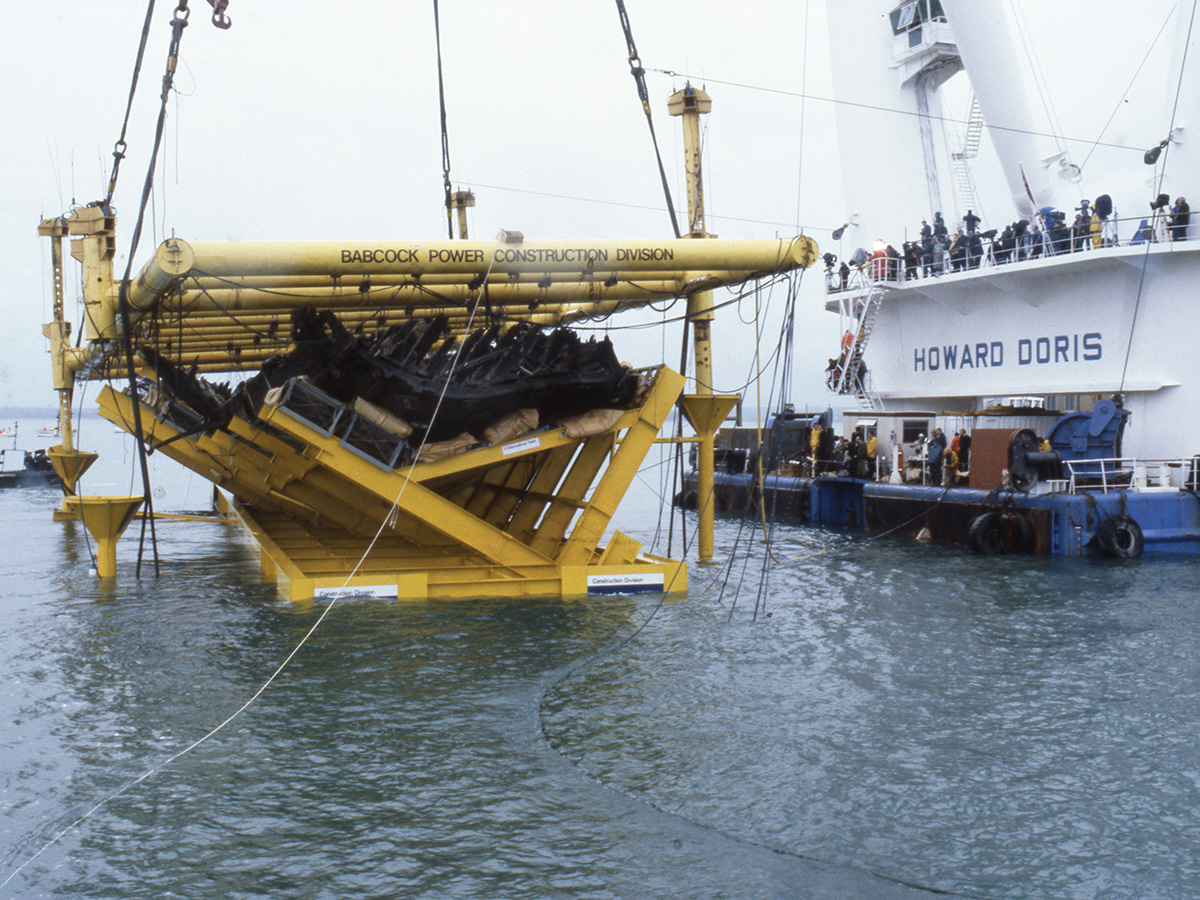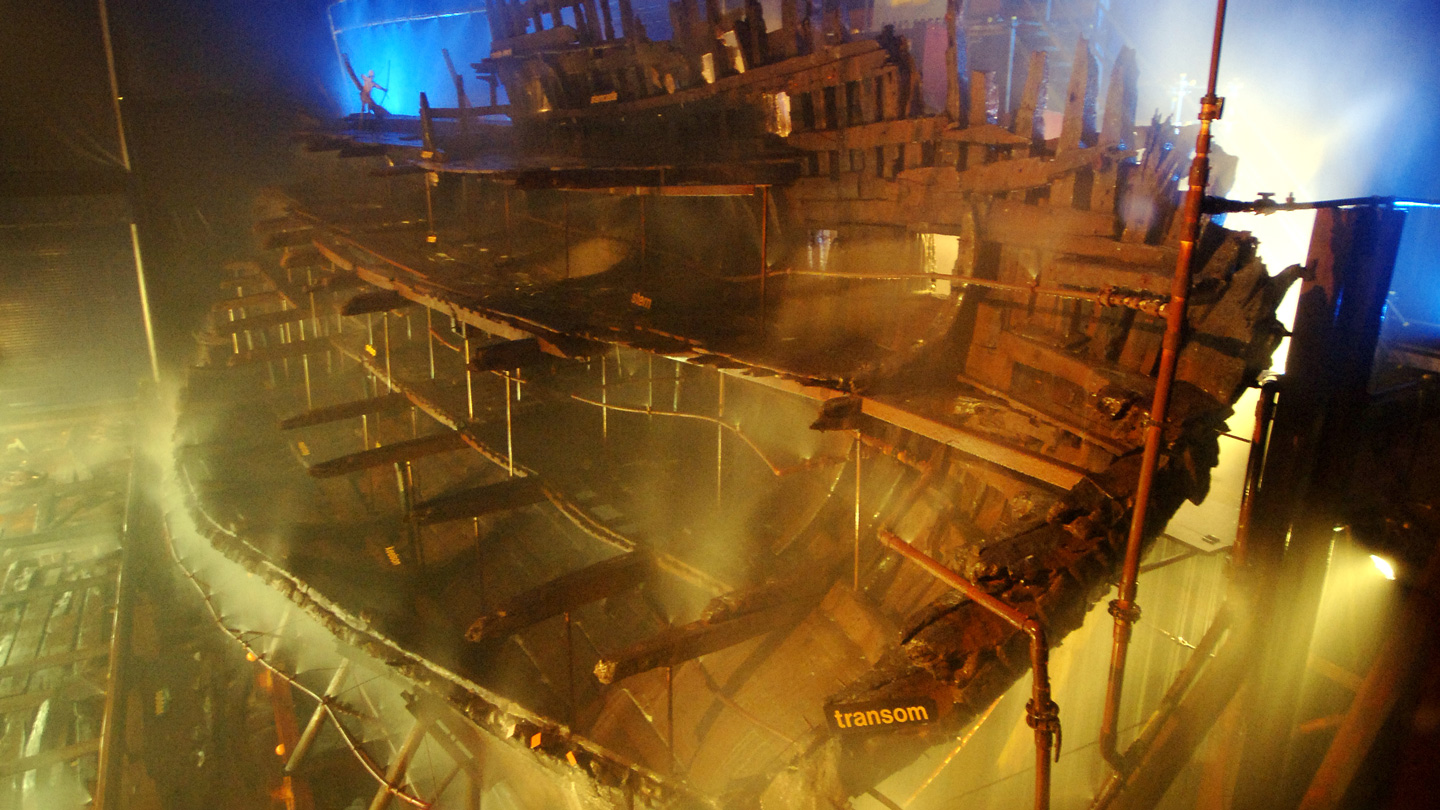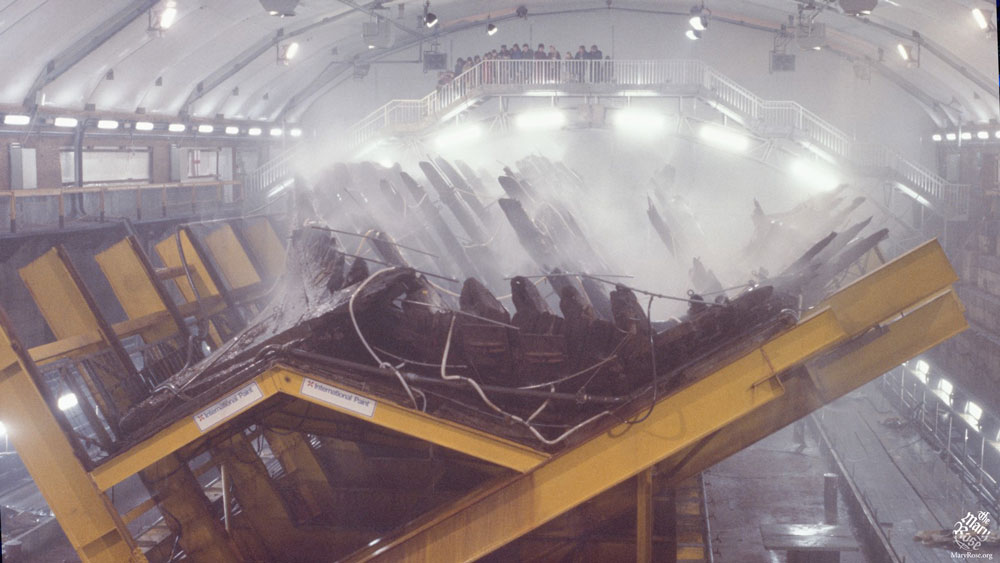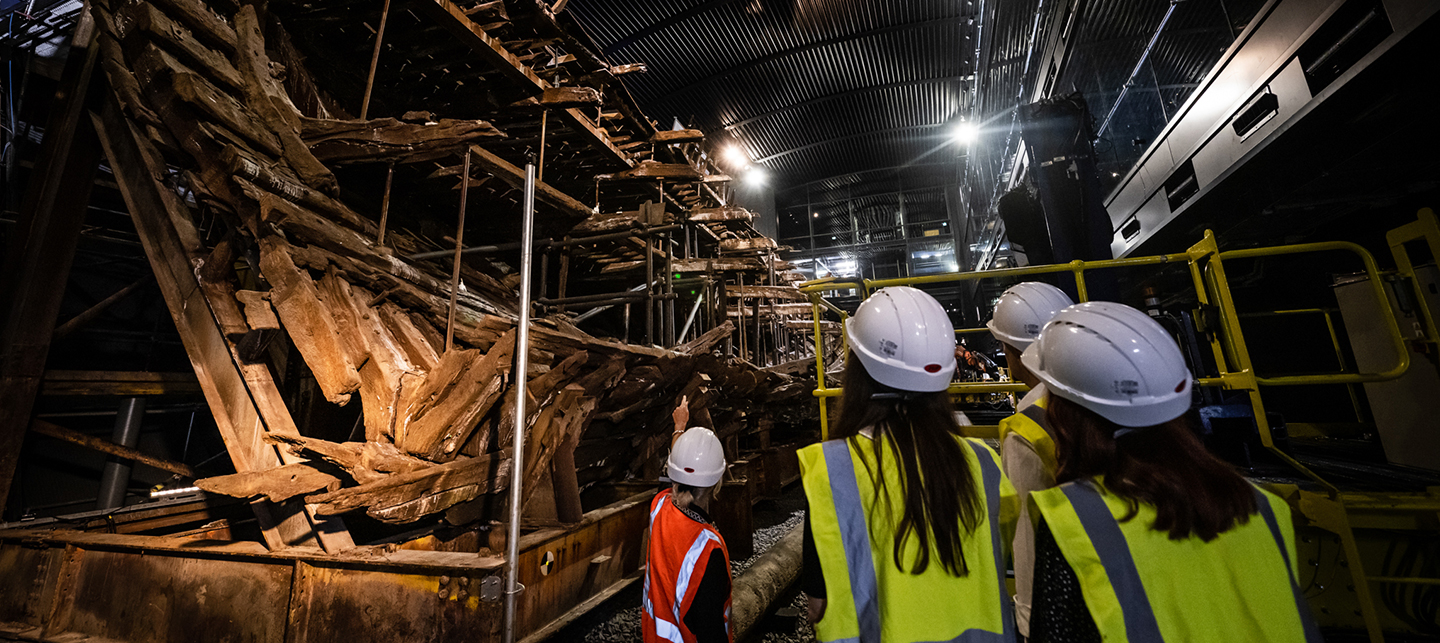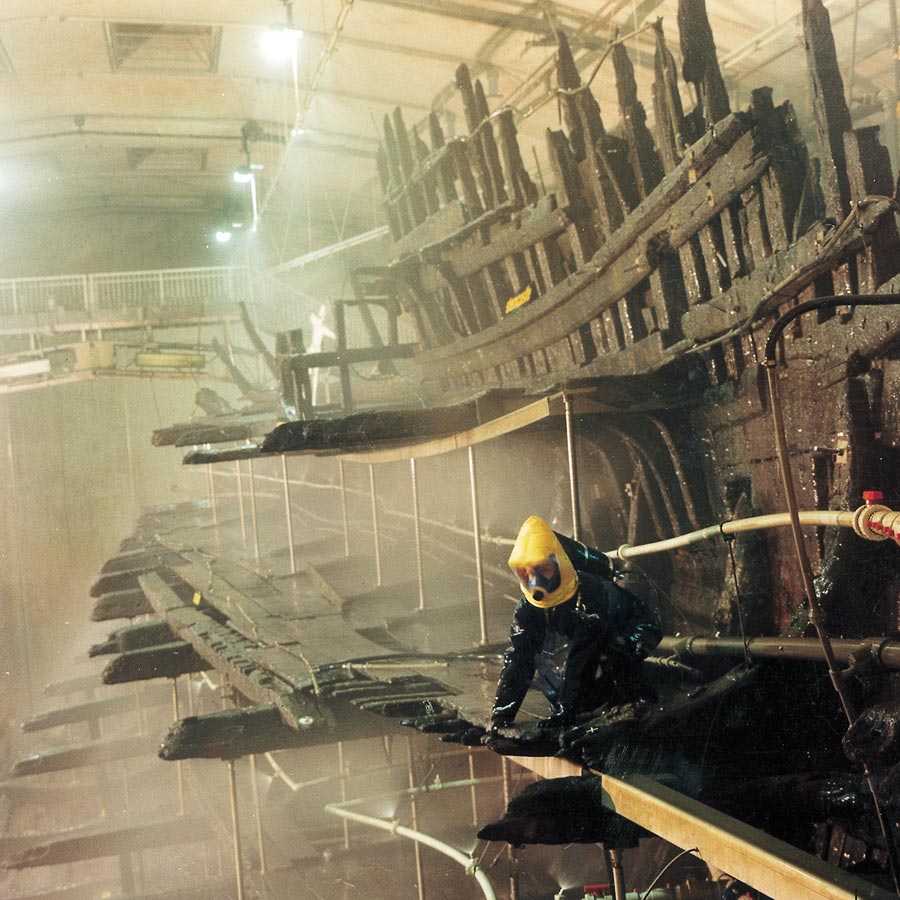
Spraying with PEG
The part of the ship that was recovered, the starboard side, was protected from being attacked, by shipworm and gribble, or from being eroded away by the tides and currents, by a ‘blanket’ of organic rich silts on the seabed. The silt cut off the oxygen, creating an environment in which sea creatures can’t survive. However, some bacteria can thrive in areas without oxygen, and these bacteria ate away at microscopic parts of the cells of the wood, leaving only a weak skeleton structure which then filled with sea water.
Polyethylene glycol treatments (PEG) were chosen by the conservation team as the best approach to filling the microscopic voids within the wood in order to stabilise the ship. PEG was selected because of the success of this resin in the historic treatment of waterlogged wood, including the treatment of the Vasa (17th-century Swedish warship). PEG would consolidate the timbers by filling the voids and lumens of degraded and weakened cells within the wood.
It was decided that the ship could not be submerged in PEG due to the economic and practical costs of building a tank big enough to hold it. Instead, spraying the ship with PEG was considered the most effective method for covering all the timbers.
Phase one of the conservation treatment began on 30th September 1994 and continued until 2003. A low molecular weight PEG was sprayed all over the ship to fill the less degraded inner parts of the timbers. A circulating spray system was constructed in the museum which would collect the sprayed PEG and reuse it to continue the spraying process. This system consisted of 522 metres of pipework and 315 nozzles around the ship. Around 40,000 litres of PEG were sprayed onto the ship each day. 2004 to 2013 saw Phase Two of the conservation treatment; the ship was sprayed with a higher molecular weight of PEG. A higher molecular weight was needed to increase the mechanical strength of the wood, reduce the risk of cellular collapse and seal in the lower molecular weight PEG.
